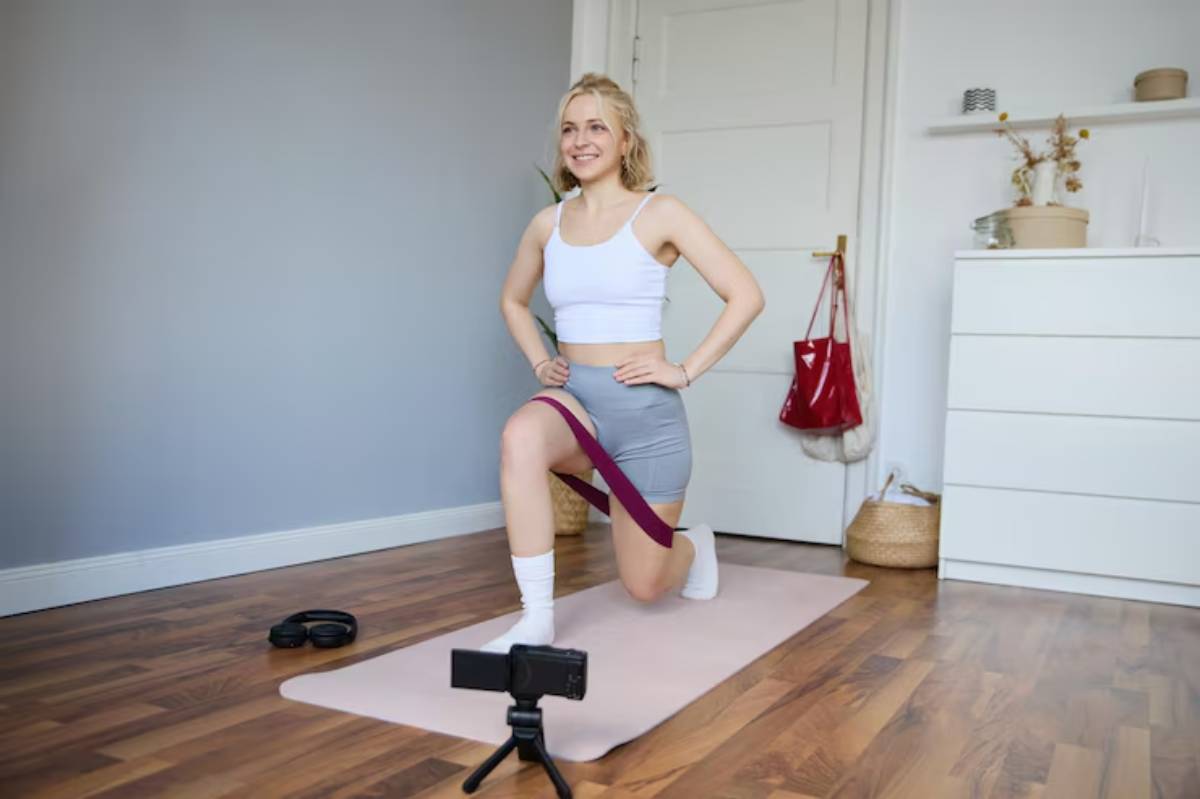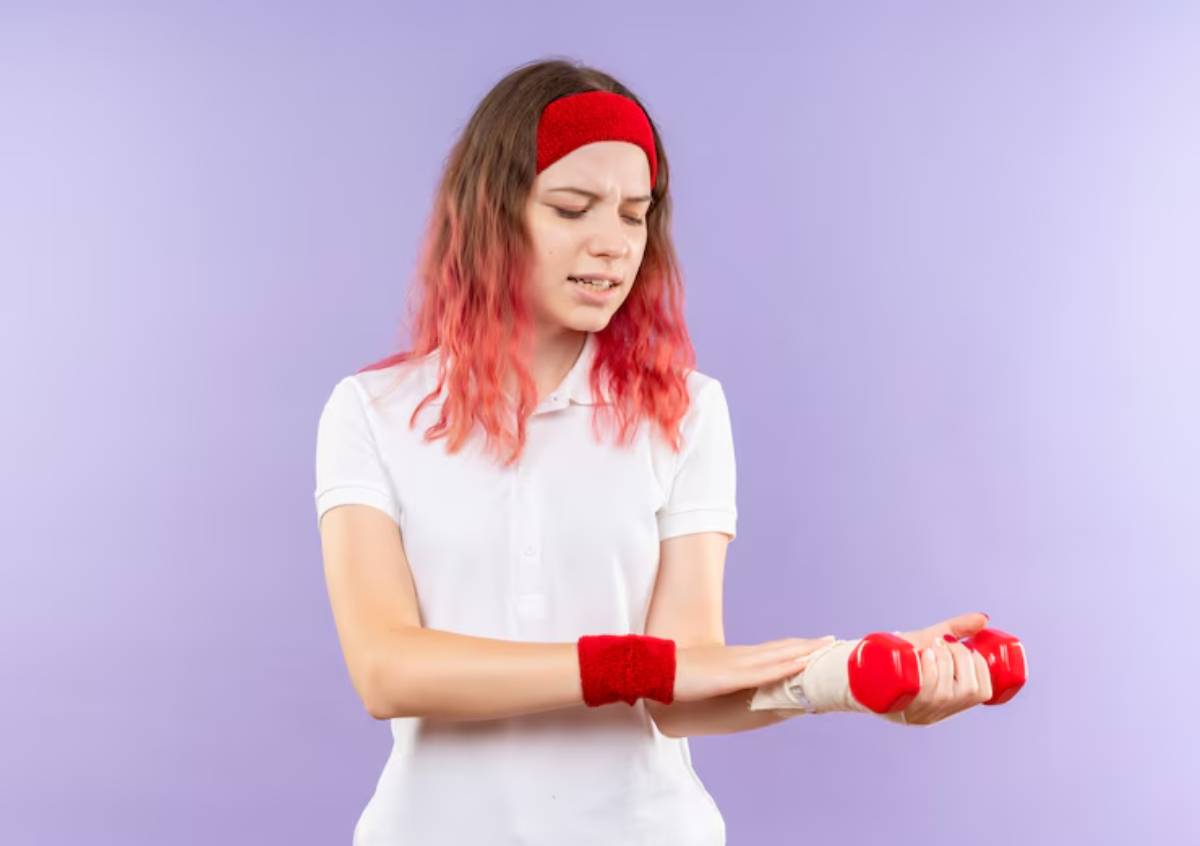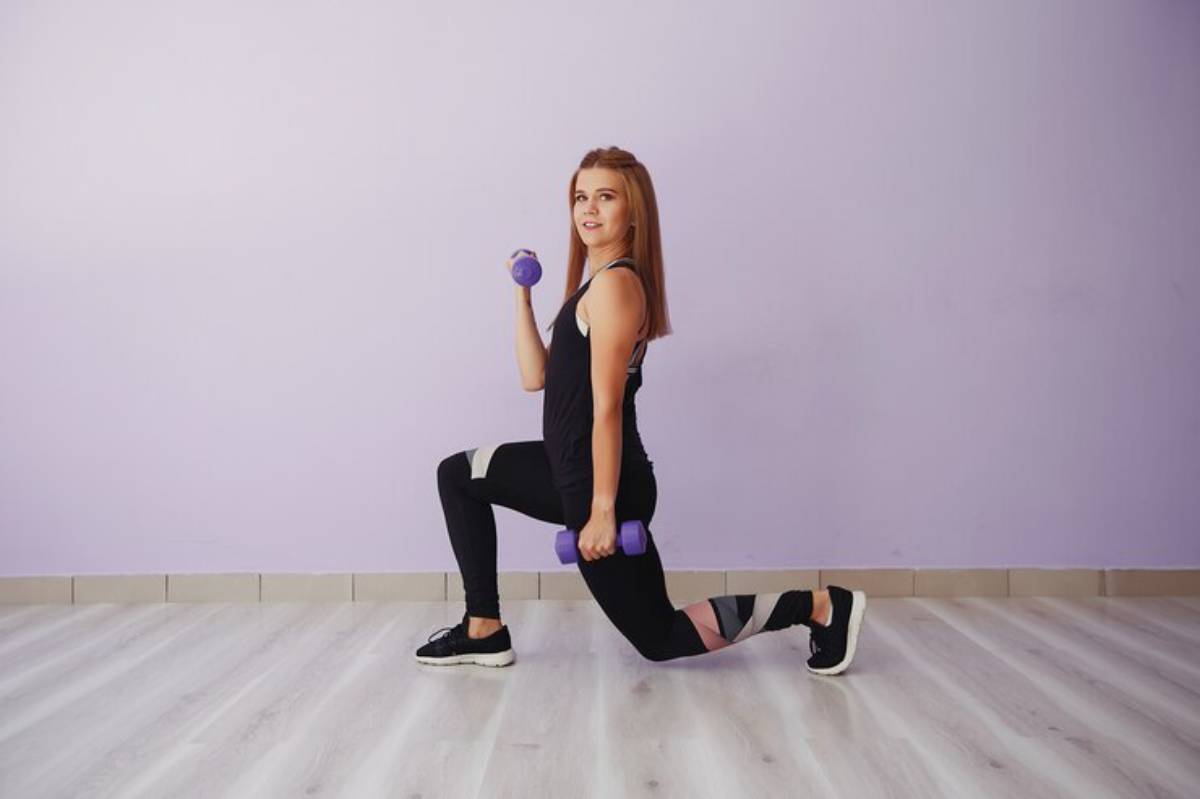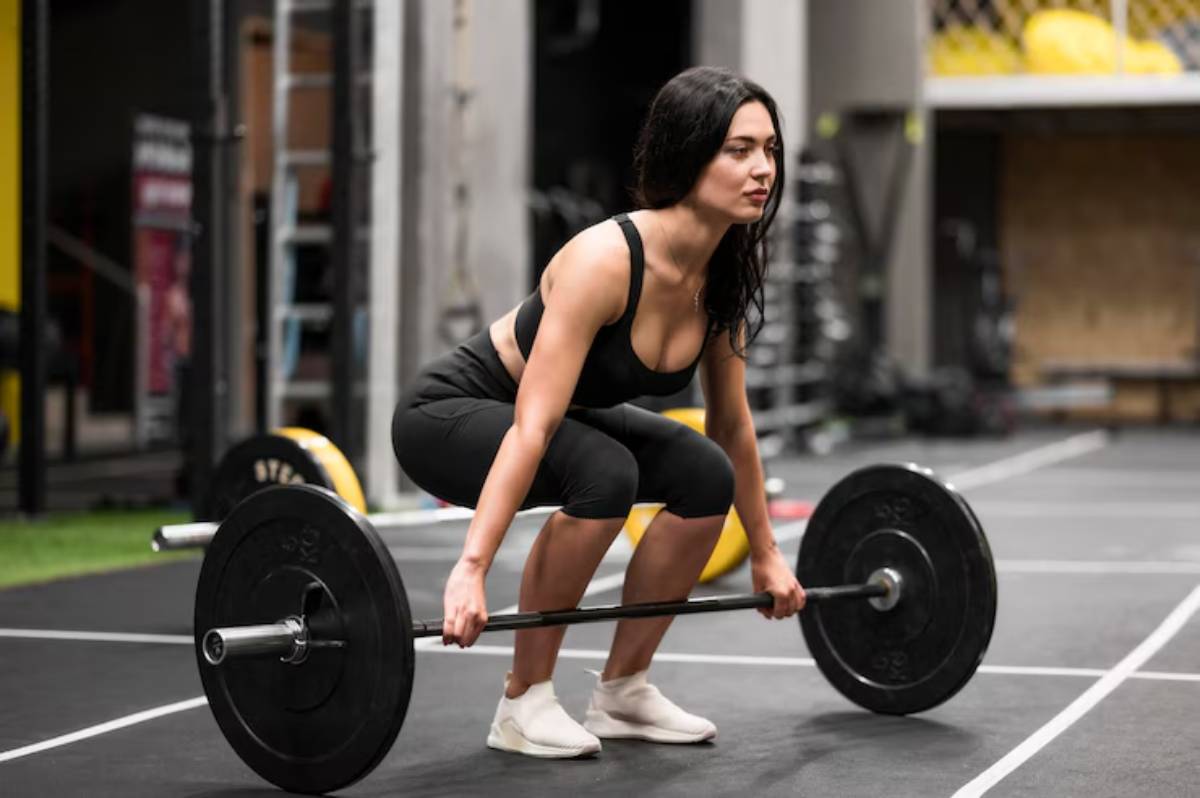
Best Glute-Building Exercises With Weights
Let’s be honest — glute training isn’t just about aesthetics. Sure, building a firm, lifted booty can boost confidence and turn heads, but strong glutes do much more than look good. They power your movement, support your lower back, and stabilise your hips and knees.
But if you’ve been doing endless bodyweight squats and still aren’t seeing the results you want, it’s time to up your game. Enter weighted glute exercises. Adding resistance — particularly with barbells, dumbbells, or kettlebells — helps recruit more muscle fibres, increase tension, and spark real growth.
This blog is your go-to guide for the best glute-building exercises with weights, specifically tailored to women’s strength and structure. We’ll cover what makes each exercise effective, how to perform them properly, and how to include them in a balanced routine for lasting results.
Whether your goal is shape, strength, or performance, these exercises are the backbone of any solid glute training programme.
Why Weighted Glute Training Matters
More muscle = more shape and support
Your glutes are made up of three muscles — gluteus maximus, medius, and minimus.
Together, they play a crucial role in:
- Hip extension (think: standing up, climbing stairs)
- Pelvic stability
- Lower back support
- Athletic performance and injury prevention
When you train with weights, you create more mechanical tension, which is the number one driver of muscle growth. Bodyweight training can only take you so far. For real definition and strength, resistance is essential.
It’s not just about squats
Many people associate glute training with squats, and while squats have their place, they aren’t always the best at isolating the glutes. Targeted exercises that emphasise hip extension, abduction, and external rotation are more effective for sculpting your backside.
You also want variety. By combining heavy compound lifts with isolated accessory work, you hit every angle and fibre of the glutes, creating a rounder, firmer look.
The Best Glute-Building Exercises With Weights
These are the heavy hitters — literally. Each of these exercises is time-tested, supported by research, and used by athletes, personal trainers, and women around the world for one reason.
1. Barbell Hip Thrusts
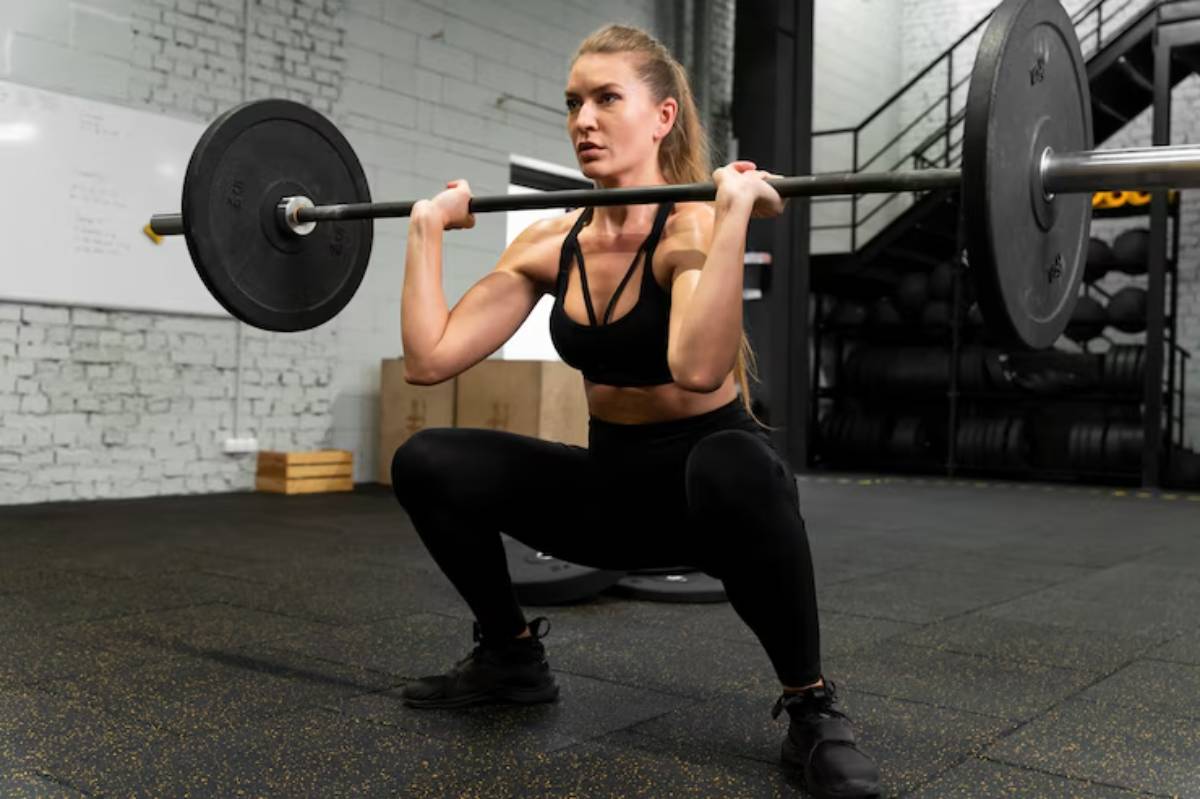
Why it works:
This is arguably the king (or queen) of glute exercises. It creates high levels of glute activation through full hip extension, especially at the top of the lift.
How to do it:
Sit on the ground with your back against a bench and roll a loaded barbell over your hips. Bend your knees with feet flat on the floor. Thrust your hips upwards, squeezing the glutes at the top, then lower back down.
Tips:
- Use a barbell pad or towel to protect your hips
- Don’t hyperextend your back — stop when your torso is parallel to the floor
- Control the descent to avoid relying on momentum
2. Romanian Deadlifts (RDLs)
Why it works:
RDLs target the posterior chain, especially the glutes and hamstrings. The stretch under tension is ideal for muscle hypertrophy.
How to do it:
Hold a barbell or dumbbells in front of you, stand tall, and slowly hinge at your hips while keeping your back flat and knees slightly bent. Lower the weight to mid-shin and return by driving through your heels.
Tips:
- Keep your core braced and chest proud
- Think about sending your hips backwards rather than lowering the weight
- Use slow, controlled movement — don’t bounce at the bottom
This lift is great for pairing with other exercises in a balanced weekly training plan, especially when working on lower-body strength.
3. Dumbbell Bulgarian Split Squats
Why it works:
This unilateral exercise strengthens each leg independently and challenges balance, stability, and glute engagement — especially on the front leg.
How to do it:
Hold dumbbells at your sides and place one foot behind you on a bench. Lower your back knee toward the ground while keeping the front shin vertical, then press up through your front heel.
Tips:
- Focus on pushing through the front heel, not the back foot
- Don’t let your knee cave inward
- Start with bodyweight if you’re new to the movement
4. Kettlebell Swings
Why it works:
This dynamic movement combines cardio and power, building explosive glutes and excellent hip drive.
How to do it:
Swing a kettlebell between your legs and thrust your hips forward to project it to shoulder height. The power should come from your hips, not your arms.
Tips:
- Keep your back neutral
- Engage your core to stabilise
- Don’t squat — it’s a hip hinge, not a knee bend
5. Barbell Back Squats
Why it works:
While not as glute-dominant as hip thrusts, back squats are a staple for overall lower body development, including the glutes.
How to do it:
Place a barbell across your upper back, brace your core, and squat down by bending your hips and knees. Drive back up through your heels.
Tips:
- Go deep (below parallel) for more glute activation
- Keep your knees in line with your toes
- Use a stance slightly wider than shoulder-width if you want more glute involvement
Squats are a versatile compound movement and are often central to a 4-day upper/lower training plan for strength.
6. Cable Kickbacks
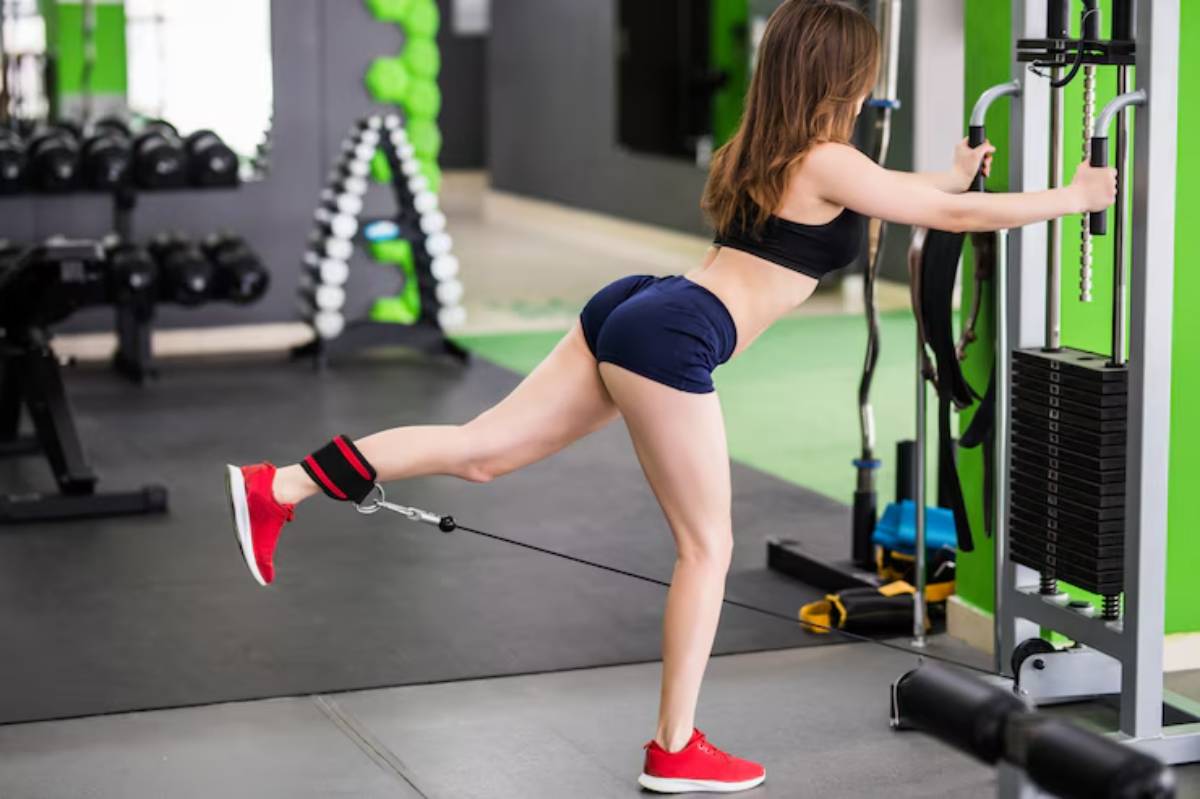
Why it works:
This isolation exercise targets the gluteus maximus with minimal hamstring involvement. Perfect for accessory work and sculpting.
How to do it:
Attach an ankle strap to a low cable. Stand facing the machine, and kick your leg back with a slight bend in your knee, squeezing at the top.
Tips:
- Keep your torso still — don’t arch your back
- Move slowly and with control
- Use higher reps for the best burn
7. Dumbbell Step-Ups
Why it works:
This functional exercise strengthens your glutes while also building stability and coordination.
How to do it:
Hold dumbbells at your sides, step up onto a box or bench with one foot, press through the heel to rise, and bring your back foot up. Step back down and repeat.
Tips:
- Keep your chest upright
- Use a bench high enough to create a 90-degree angle at the hip
- Control both the ascent and descent
How to Include These in Your Glute Training Week
To get the most from your booty workouts, don’t just add all seven to one mega session. Instead, split them across your training week and combine heavy compound lifts with lighter accessory work.
Example training split:
Day 1 – Glute strength focus:
- Barbell hip thrusts
- Bulgarian split squats
- Cable kickbacks
Day 3 – Posterior chain day:
- Romanian deadlifts
- Kettlebell swings
- Back extensions
Day 5 – Glute accessory & conditioning:
- Dumbbell step-ups
- Cable kickbacks
- Mini-band glute circuits (optional)
Train glutes 2–3 times per week, ensuring at least 48 hours of rest between heavy sessions.
Recovery Tips for Maximum Gains
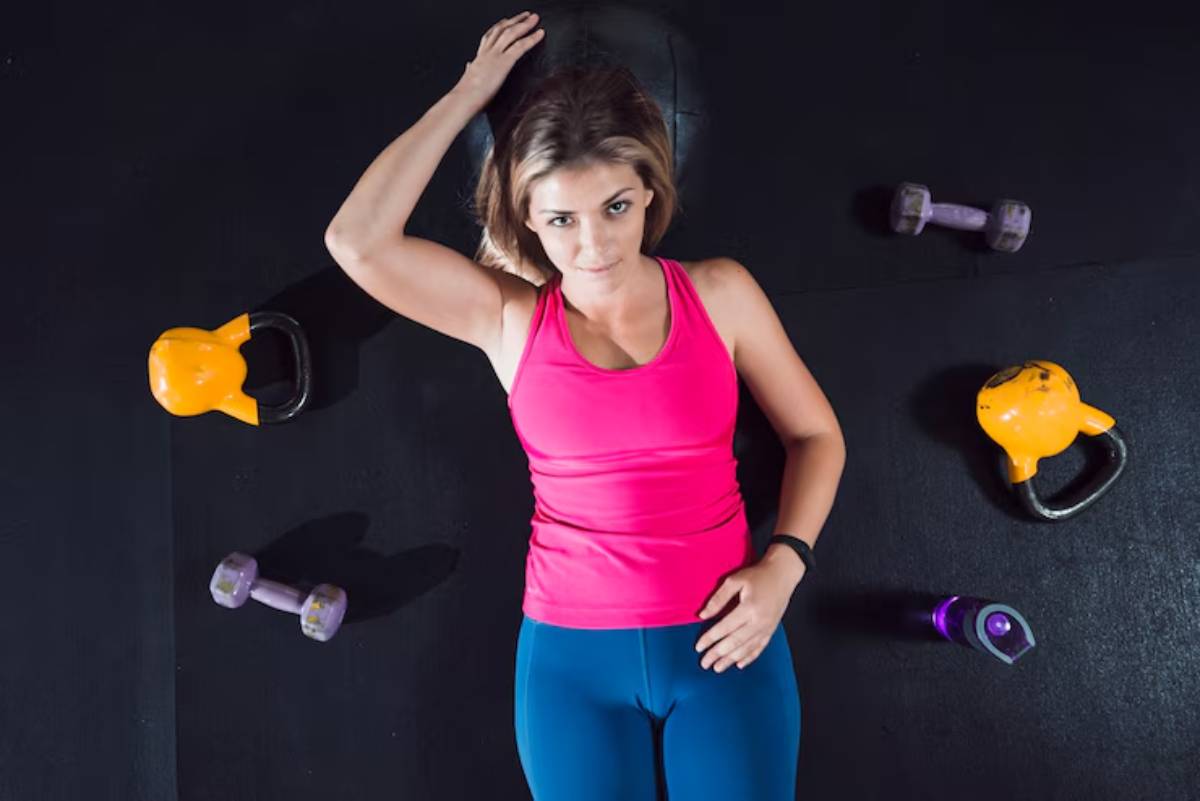
Strength happens during recovery, not just in the gym. To grow your glutes, prioritise:
- Sleep: Aim for 7–9 hours each night
- Protein intake: About 1.6–2.2g/kg of body weight
- Mobility: Stretch your hip flexors and foam roll your glutes
- Rest days: Let muscles repair before training them again
Progressive overload is key, but it only works when your body is fuelled and rested.
From Flat to Firm: What Women Are Saying
Sana, 29 – Marketing Executive:
“I spent months doing squats and wondering why my glutes weren’t changing. Once I started lifting heavier and included hip thrusts and RDLs, the difference was huge. My jeans fit better, and I finally feel strong.”
Lina, 38 – Pilates Instructor:
“Adding weighted glute exercises helped me go from soft to sculpted. And surprisingly, my lower back pain disappeared, which I now realise was due to weak glutes.”
These shifts are achievable with the right mix of intent, structure, and patience.
A Stronger Glute Strategy Starts Now
If your goal is stronger, more defined glutes, stop spinning your wheels with high-rep bodyweight circuits alone. Weighted exercises are the next level your booty needs.
By combining heavy compound lifts like hip thrusts and deadlifts with isolated accessory work, you’ll target every part of the glute complex for total development.
And the best part? Glute training doesn’t just change your body — it improves how you move, feel, and function in everyday life.
So load the bar, grab the dumbbells, and trust the process — your strongest self starts at the hip.
